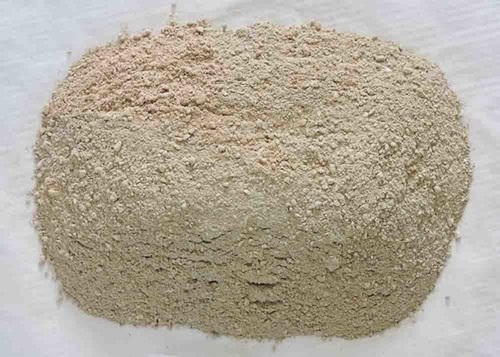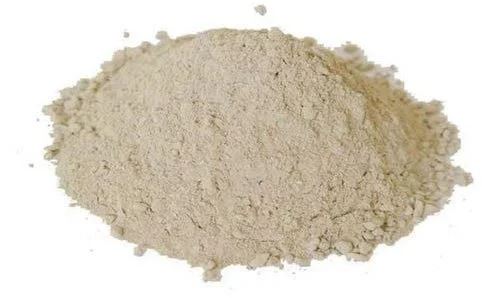The Role of Refractory Clay in the Steel and Metal Industry
Refractory clay is a fundamental material that plays a crucial role in the steel and metal industry. Its exceptional heat resistance and other unique properties make it an indispensable component for various processes involved in the production of steel and metals. In this article, we will delve into the significance of refractory clay and its versatile applications within the steel and metal industry.
What is Refractory Clay?
Refractory clay, also known as fire clay, is a type of clay with high alumina content and exceptional heat resistance properties. It is derived from naturally occurring clay deposits and has been utilized for centuries in various industrial applications due to its ability to withstand extremely high temperatures without deforming or melting.
Properties of Refractory Clay
Refractory clay boasts several key properties that make it ideal for applications in the steel and metal industry. Its high melting point, low thermal conductivity, and excellent resistance to thermal shock make it an essential material for lining furnaces, kilns, and other high-temperature equipment.
Refractory Clay in Furnace Lining
One of the primary applications of refractory clay is in furnace lining. Furnaces used in the steel and metal industry are subjected to extreme temperatures and harsh chemical environments. Refractory clay's ability to maintain structural integrity under these conditions helps protect the furnace's outer shell and ensures efficient and safe operations.
Blast Furnace Operations and Refractory Clay
In blast furnace operations, refractory clay linings are vital for containing the intense heat required to smelt iron ore and produce molten metal. The lining prevents heat loss and minimizes wear and tear on the furnace walls, thereby enhancing the overall efficiency of the process.
Crucibles and Refractory Clay
Crucibles, which are vessels used for melting and casting metals, often rely on refractory clay due to its resistance to corrosion and erosion. The clay's durability and ability to withstand repeated heating and cooling cycles make it a preferred material for maintaining the integrity of crucibles.
Continuous Casting and Refractory Clay
Refractory clay finds applications in continuous casting processes, where molten metal is solidified into various shapes. The clay's insulating properties contribute to controlled cooling and solidification, resulting in high-quality metal products.
Refractory Clay in Heat Treatment
Heat treatment processes, such as annealing, tempering, and quenching, require precise temperature control. Refractory clay aids in maintaining consistent and uniform heat distribution, ensuring that metal parts undergo the desired changes in microstructure and properties.
Refractory Insulation Materials
Apart from its use in linings, refractory clay is incorporated into insulation materials that enhance energy efficiency in industrial operations. These materials help minimize heat loss and reduce the energy consumption associated with high-temperature processes.
Sustainability and Innovation in Refractory Clay Usage
The steel and metal industry is increasingly focused on sustainability and environmental responsibility. Refractory clay's natural abundance and recycle ability align with these goals, and ongoing research aims to develop innovative ways to further optimize its usage.
Challenges and Advances in Refractory Clay Technology
While refractory clay offers exceptional benefits, challenges such as wear, corrosion, and erosion still persist. Researchers and engineers are continually working on developing advanced formulations and techniques to address these challenges and extend the lifespan of refractory clay linings.
Future Prospects of Refractory Clay
As the steel and metal industry evolves, the demand for high-performance materials like refractory clay is expected to grow. Innovations in clay processing, improved lining designs, and increased emphasis on sustainable practices are likely to shape the future of refractory clay's role in the industry.
FAQs
What is refractory clay?
Refractory clay, also known as fire
clay, is a type of clay with high heat resistance used in various
high-temperature industrial applications.
How is refractory clay used in furnaces?
Refractory clay is used to line furnaces to protect them from extreme
temperatures and harsh chemical environments.
What are crucibles, and why is refractory clay used in
them?
Crucibles are vessels used for
melting metals, and refractory clay is used to maintain their integrity and
resist corrosion.
What is the role of refractory clay in continuous casting?
Refractory clay aids in controlling the cooling and solidification of molten metal during continuous casting processes.
How does refractory clay contribute to sustainability in the industry?
Refractory clay's natural abundance and recycle ability align with the industry's sustainability goals, promoting environmentally friendly practices.
Conclusion
Refractory clay is an indispensable component of the steel and metal industry, serving critical roles in furnace linings, blast furnace operations, continuous casting, and heat treatment processes. Its remarkable heat resistance, insulating properties, and durability make it a versatile material that contributes to the efficiency, quality, and sustainability of various industrial processes.
For reliable refractory clay products, essential for uninterrupted operations, Visit Here for Reliable Refractory Clay. Our offerings ensure optimal performance and durability, contributing to efficient and cost-effective production in the steel and metal sector. Trust in our quality refractory clay to uphold the integrity of your industrial processes.




Comments
Post a Comment